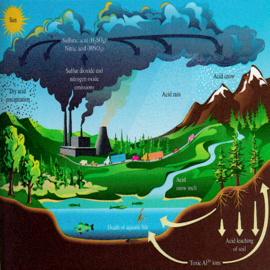
There is so much talk in the developed nations about recycling and reducing the filling of landfills, and even ceasing to use landfills as in the philosophy of “zero waste”, that it is easy for us in the west to forget what is happening elsewhere. It is a fact that with rising global affluence, landfills are being built ever faster around the world as whole, and ever bigger, to take the still rising tide of man’s waste.
In the industrializing nations there is far less regulation of landfills than in the developed countries, and although in nations such as the US, and throughout the European Union, the law in the form of each nation’s Waste Regulations requires all landfills to be lined and capped as “containment” landfills, the same does not apply in most less developed countries.
Those people that are choosing landfill site locations in the developing nations have more freedom to either damage, or protect the environment, and that is why it is so important that they consider landfills and the environment from the start of their landfill project.
The main impacts that a landfill can potentially have on the environment come under the following headings:
- landfill gas emissions and dust to the air as a local problem with odours etc
- landfill gas seeping out sideways from a landfill – which could get into houses etc
- landfill gas getting out into the atmosphere where scientists believe it will add to the greenhouse effect that is causing global warming
- landfill “garbage juice” or “leachate” – dirty rainwater which seeps through the waste – and can badly pollute groundwater when it seeps into the ground
- leachate which can break-out of landfill sides and pollute nearby rivers and streams
- dust, which can possibly contain infectious agents
- noise from the landfilling activity
- birds which can spread disease and move between suburban gardens and open tip faces.
Now, that’s a pretty big list of possible negative effects of landfills on the environment. You would think that it would be best to just completely contain them seal them up (at huge cost) like a huge garbage big, with a lined floor and a sealed cap on top.
But it isn’t necessarily. You could just let the rainwater that falls, run through them and out of the bottom, and if the bottom was build like a big biological filter the environment around the landfill would never be harmed.
These are often called “dilute and disperse” landfills, and such landfills have the great advantage that they are cheap to build and the rain flowing through them flows out of the bottom, removing the need for expensive leachate tankerage off-site or a leachate treatment plant.
These “dilute and disperse” landfills will also eventually have been flushed clean by the rain falling on them and then soaking through them in a way that is not possible for a containment landfill site.

Source by Steve Evans
 Vitamin Agent The Health & Naturalistic Source
Vitamin Agent The Health & Naturalistic Source





